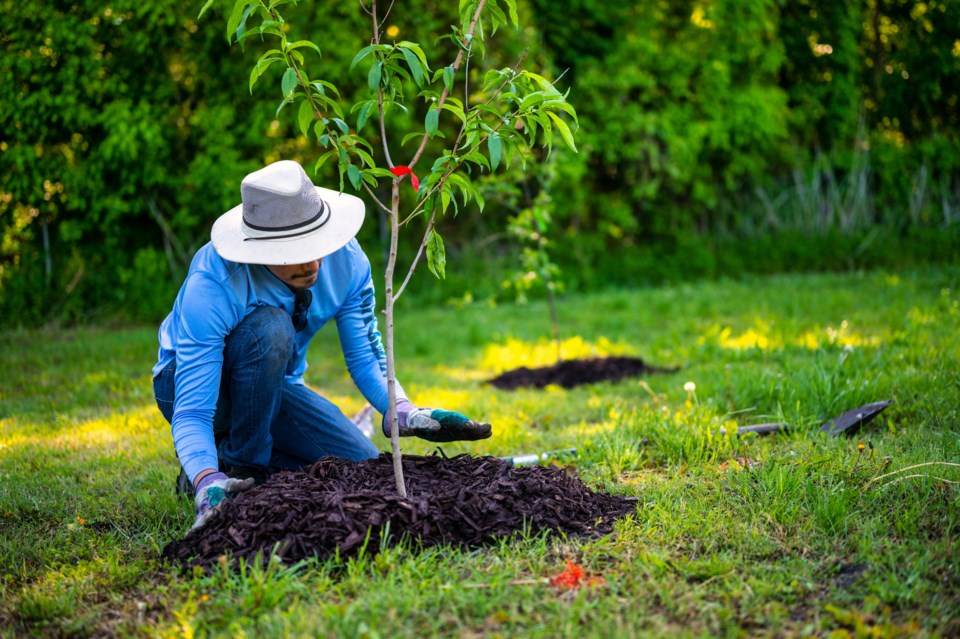The Longmont Leader accepts contributions, photos, letters to the editor, or LTEs, and op-eds for publication from community members, business leaders and public officials on local topics. Publication will be at the discretion of the editor and published opinions do not represent the views of the Longmont Leader or its staff. To submit a contribution, email [email protected].
Is planting trees a crucial and necessary aspect of climate action?
Longmont adopted a Climate Emergency Declaration in 2019 and approved a Climate Action Recommendations Report the following year. Yet at that time, the city’s own Parks and Recreation Advisory Board critiqued this report for “lacking consideration of nature-based solutions, such as tree planting,” in comparison with the report’s emphasis on hard structure measures.
Since then, we have seen Longmont's government blazing ahead on controversial plans for 100% building electrification and an envisioned 10x increase in electric vehicles by 2030, while planting trees has lagged behind. In 2022, for example, Longmont planted only 236 trees, far below the average tree replacement rate in urban areas, as mature trees die from old age or succumb to harsh weather conditions.
Of course, the role of trees in mitigating climate change is well established. Trees absorb carbon dioxide from the atmosphere through photosynthesis and store it in their biomass and soil. This process is known as carbon sequestration, and it is a crucial mechanism for reducing the amount of carbon dioxide in the atmosphere.
Trees also help to cool the air by providing shade and transpiring water, which reduces the urban heat island effect and improves air quality. Trees provide a range of other ecological benefits, such as reducing erosion and runoff, improving biodiversity, and providing habitat for wildlife. Moreover, trees benefit human health, protecting people from extreme summer heat and providing a sense of comfort, leisure, and even joy.
But as we move around Longmont, we can see some residential areas are populated by tons of trees and others don’t have many trees at all. This observation is validated by data and maps. A free website – www.treeequityscore.org – visually depicts the distribution of trees in urban areas across the United States, including Longmont.
The site reveals that 93% of blocks in Longmont’s northwestern Ward 3 score above 80 in “tree equity,” a metric that helps cities assess how well they are delivering equitable tree canopy cover to all residents, whereas 44% of eastern Ward 1 and 60% of southern Ward 2 score below 80.
Surprisingly, Longmont’s tree inequity cuts across race and class. A few of the city’s wealthiest and whitest neighborhoods score low in tree canopy cover, as do a number of the lower-income and more diverse parts of Longmont. Several of our sparsest neighborhoods in terms of tree cover score in the 50s while the densest hit 100.
Therefore, planting trees in Longmont is not only an essential climate action but also an equity issue that impacts the health and well-being of all residents. By increasing tree canopy coverage in the neighborhoods that need it most, Longmont can reduce the negative environmental and health impacts experienced by these communities, such as higher temperatures, year-round air quality concerns, and spiking summer ozone.
To achieve an ambitious yet achievable objective such as planting 30,000 trees by 2030 – sequestering 330 tons of carbon and 10 tons of ozone each year – Longmont’s city council and government must take action. First, council can allocate more funding to tree planting programs, especially in the neighborhoods with low tree canopy coverage.
Second, open space and forestry division staff should undertake an effort to comprehensively research and plan how to best align increased tree planting with our human and natural resources, including soil conditions, water, suitability of various tree species, labor and maintenance, and the region’s changing climate as well as unique microclimates.
Third, we should escalate education and collaboration with private landowners, homeowner associations, community organizations, churches, non-profits, and volunteers to engage residents in planting and caring for trees, promoting a deeper sense of ownership and pride in neighborhoods.
Fourth, the city owns swaths of open space farmland in Weld County. The city should explore transforming some or all of this acreage into forested parkland. In addition, we should look into regional partnerships with counties, the state, and even federal agencies to marshal resources and magnify the impact of planting trees both within and outside city limits.
Planting trees is not without challenges. Longmont's urban landscape is constantly changing, with new developments, land use changes, and natural conditions altering the tree canopy coverage. Planting and maintaining more trees will require careful planning, coordination, and expertise, which may strain the city's resources and demand additional personnel. Moreover, ensuring that tree planting efforts are equitable and inclusive requires addressing historical and systemic barriers to access and participation.
In conclusion, it’s hard to imagine seriously addressing a true “climate emergency,” if there indeed is one, without planting more trees. Promoting greater tree equity in Longmont is a crucial step towards strengthening climate resilience, sequestering carbon, reducing air pollution, and enhancing both environmental and human health. By adopting an ambitious yet achievable plan to ramp up tree planting, Longmont will create a more sustainable, livable and healthy city for all our residents.
Ethan Augreen is a Longmont resident who earned a master’s degree in environmental leadership and has experience in sustainable food systems and the ecological design practice of permaculture.
Correction: The city of Longmont planted 236 trees. The author previously stated that only 226 trees were planted.



.jpg;w=120;h=80;mode=crop)